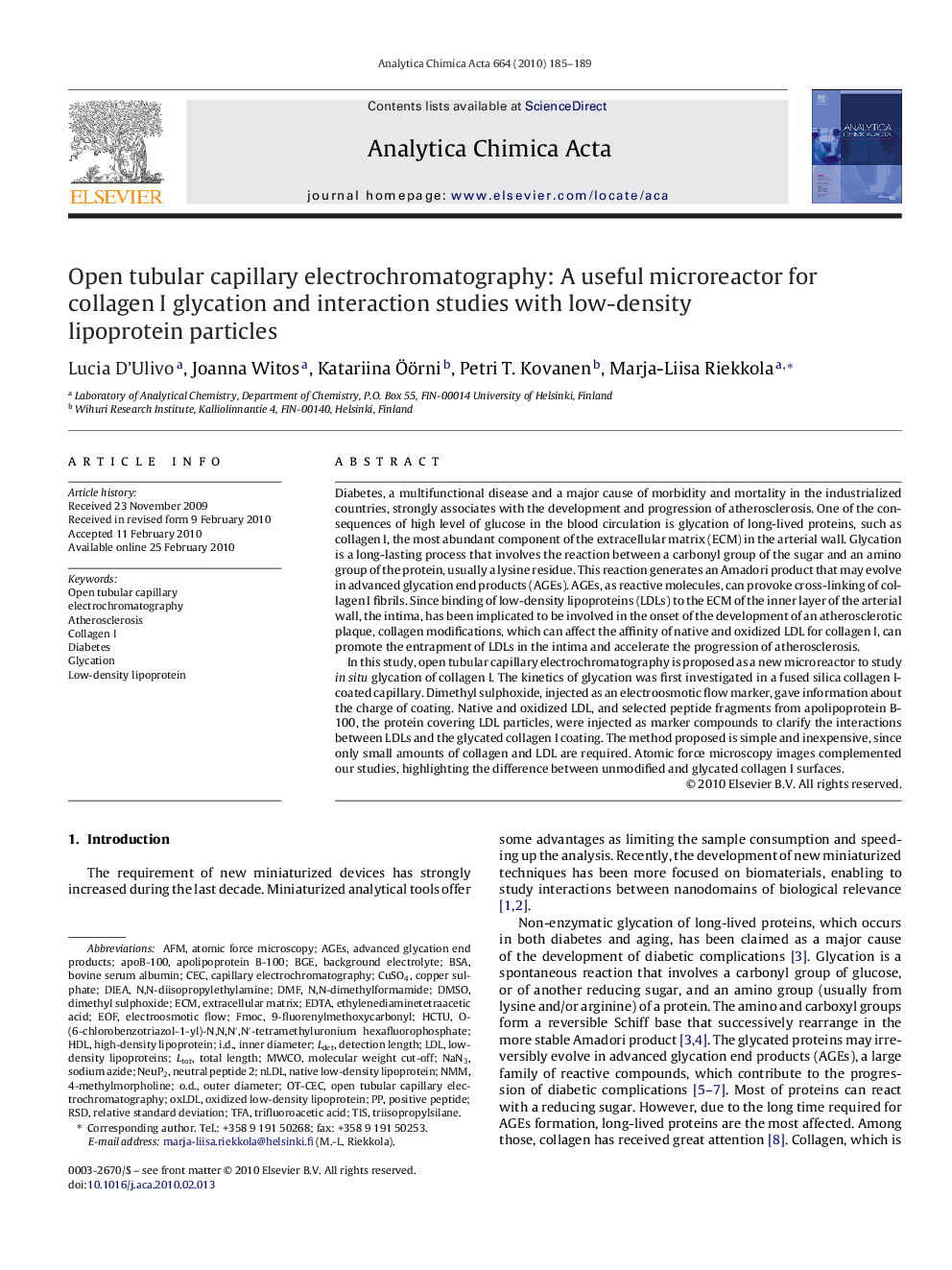| کد مقاله | کد نشریه | سال انتشار | مقاله انگلیسی | نسخه تمام متن |
|---|---|---|---|---|
| 1167759 | 960558 | 2010 | 5 صفحه PDF | دانلود رایگان |

Diabetes, a multifunctional disease and a major cause of morbidity and mortality in the industrialized countries, strongly associates with the development and progression of atherosclerosis. One of the consequences of high level of glucose in the blood circulation is glycation of long-lived proteins, such as collagen I, the most abundant component of the extracellular matrix (ECM) in the arterial wall. Glycation is a long-lasting process that involves the reaction between a carbonyl group of the sugar and an amino group of the protein, usually a lysine residue. This reaction generates an Amadori product that may evolve in advanced glycation end products (AGEs). AGEs, as reactive molecules, can provoke cross-linking of collagen I fibrils. Since binding of low-density lipoproteins (LDLs) to the ECM of the inner layer of the arterial wall, the intima, has been implicated to be involved in the onset of the development of an atherosclerotic plaque, collagen modifications, which can affect the affinity of native and oxidized LDL for collagen I, can promote the entrapment of LDLs in the intima and accelerate the progression of atherosclerosis.In this study, open tubular capillary electrochromatography is proposed as a new microreactor to study in situ glycation of collagen I. The kinetics of glycation was first investigated in a fused silica collagen I-coated capillary. Dimethyl sulphoxide, injected as an electroosmotic flow marker, gave information about the charge of coating. Native and oxidized LDL, and selected peptide fragments from apolipoprotein B-100, the protein covering LDL particles, were injected as marker compounds to clarify the interactions between LDLs and the glycated collagen I coating. The method proposed is simple and inexpensive, since only small amounts of collagen and LDL are required. Atomic force microscopy images complemented our studies, highlighting the difference between unmodified and glycated collagen I surfaces.
Journal: Analytica Chimica Acta - Volume 664, Issue 2, 7 April 2010, Pages 185–189